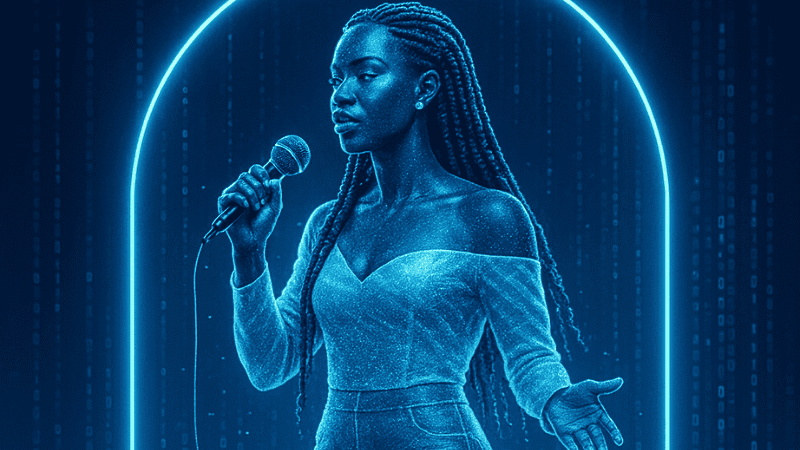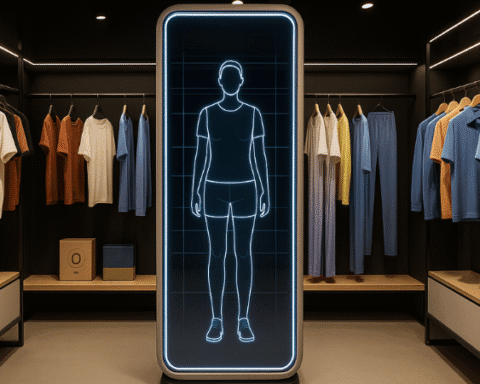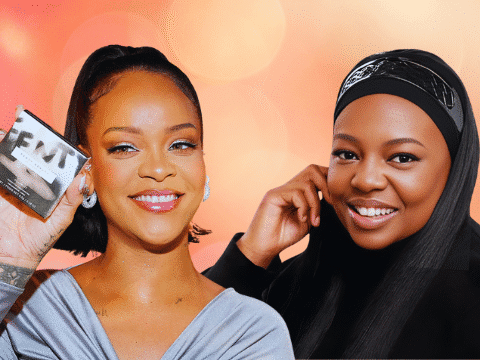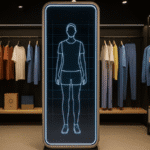The “creator era” is ending — at least in the way we’ve known it.
Creators aren’t just competing with each other anymore — they’re competing with the platforms themselves.
Spotify has already experimented with AI-generated bands, YouTube is building AI-powered video tools, and TikTok’s algorithm can just as easily amplify synthetic influencers as human ones.
At the same time, 83% of creators are now using AI tools in some part of their workflow, according to a 2025 survey. Creation itself is no longer scarce.
What matters now is how creators design systems, own assets, and architect ecosystems that can scale.
That’s why the future belongs to Content Architects — people who orchestrate both human creativity and AI capabilities, instead of relying on one piece of content or one platform at a time.
From Creator to Content Architect
The old model was simple: individual creators produced their own content and relied on platforms to distribute it.
The new model is architectural. A Content Architect doesn’t have to do everything alone. Instead, they orchestrate freelancers, collaborators, and AI systems to create scalable content engines.
Think of it like moving from being a one-person band to being the director of an orchestra.
This shift matters because platforms themselves are no longer neutral. They’re beginning to act like creators, too.
Platforms Are Building Their Own Synthetic Stars
In June 2025, Spotify debuted Velvet Sundown, a band that didn’t actually exist. The music, likenesses, and backstory were all generated by AI.
Within weeks, the group had racked up over 1.2 million streams, even topping Sweden’s Viral 50 chart, before fans realized none of it was real.
This isn’t the first time Spotify has been accused of blurring the lines between real and synthetic. The company has a controversial history of “fake artists” — tracks produced or commissioned internally, sometimes without transparent credit.
The leap to fully AI-generated music was almost inevitable.
And it won’t stop there. If Spotify can build its own AI bands, what’s to stop YouTube or TikTok from creating their own AI influencers?
Platforms control the algorithms. They decide which content rises to the top. Why wouldn’t they prioritize content they own?
Platforms Are Competing Like Amazon
What’s happening in content today mirrors what Amazon did in e-commerce.
Amazon built its own private-label brands — like Amazon Basics — and then placed them alongside or even above third-party sellers on its marketplace.
Those sellers weren’t just competing with each other; they were competing with Amazon itself. And because Amazon controlled the search results, it could quietly favor its own products.
Platforms like Spotify, YouTube, and TikTok are now doing the same thing with content.
By creating and promoting synthetic stars — AI bands, virtual influencers, and AI-generated videos — they’re becoming both the distributor and the competitor.
They own the marketplace. The algorithms determine what content gets promoted.
They have the data. Every stream, like, and comment feeds back into their system.
They can copy what works. Just as Amazon used seller data to launch competing products, platforms can use creator data to generate competing synthetic content.
For creators, the lesson is clear: if you rely only on platforms, you’re playing on someone else’s field — and competing against the referee.
That’s why the Content Architect mindset is essential. Like independent brands that built their own websites and customer bases outside Amazon, creators need systems and assets they can truly own.
The Risk for Independent Creators
For independent creators, this is both a warning and a wake-up call.
Platforms are no longer just hosts. They’re competitors. And if they decide synthetic content is cheaper, faster, and more predictable, they can sideline human creators without notice.
Some musicians are already pushing back. Indie band Deerhoof recently pulled its catalog from Spotify after learning that the company’s CEO had invested in AI-driven military technology. Their statement was blunt: “We don’t want our music killing people.”
It’s a stark reminder of how fragile trust is between platforms and creators — and how little control creators have when they don’t own the system.
Why the Architect Mindset Wins
Instead of resisting the wave, forward-looking creators are learning to design with it.
Take Italian producer Giampaolo Pasquile, who released The Fake Truth, an album blending AI-generated elements with live instrumentation.
He also launched a hybrid band, The Smoothies, that merges human musicianship with synthetic performance.
This is the Content Architect approach in action: utilizing AI to scale and experiment, while maintaining a human-centric focus on vision, strategy, and ownership.
Ownership and Opportunity in Black Communities
For Black creators and entrepreneurs, this shift isn’t just about survival. It’s about ownership.
Throughout history, Black creativity has powered industries from music to fashion to entertainment. But ownership has too often been stripped away — from the exploitation of early blues and jazz musicians to the undervaluing of Black innovation in modern pop culture.
AI presents both a risk and a once-in-a-generation opportunity to change that cycle.
Build the tools, not just use them. Black technologists and entrepreneurs are already creating AI platforms — from creative production software to distribution pipelines. By building the infrastructure itself, communities can capture not only the cultural value but also the economic value.
Create synthetic identities as owned IP. Imagine digital personalities, avatars, or influencers built, branded, and monetized by Black creators — assets that live independently of the platforms and belong to the community.
Invest collectively. Cooperative ownership models, investment clubs, and venture funds can ensure the value generated by AI-powered media cycles back into the community, rather than being extracted by global platforms.
If Black creators and investors don’t participate in creating these systems, we’ll simply be reacting to ones built for us. But if we step into the role of Content Architects, we can design the rules from the ground up.
How to Become a Content Architect Today
This isn’t a futuristic concept. The shift is happening now. Here’s how to start:
Use AI to augment, not replace. Let AI handle repetitive work — editing, captioning, formatting — so you can focus on your creative vision.
Build hybrid teams. Mix collaborators, freelancers, and AI tools into your workflow, always centered on a clear direction.
Own your IP. Don’t just rent space on platforms. Develop characters, digital assets, and content properties you can license and protect.
Stay transparent. Audiences will increasingly value authenticity. Make sure they know what’s human, what’s synthetic, and why.
Don’t Just Create — Architect
The creator era isn’t vanishing — it’s transforming. What’s ending is the idea of the lone creator who does everything by hand and relies entirely on platforms for distribution.
What’s beginning is the age of Content Architects — builders who combine human voices, synthetic assets, and strategic ownership to shape content systems they truly control.
For Black creators in particular, this is a chance to break a centuries-old cycle of creativity without ownership.
By designing not only the content but also the tools and ecosystems, we can ensure our communities shape — and profit from — the next era of culture.
Are you building with AI? Submit a business to be considered for upcoming editorial coverage.
Interested in investing in Black founders? Join the Investor List





















